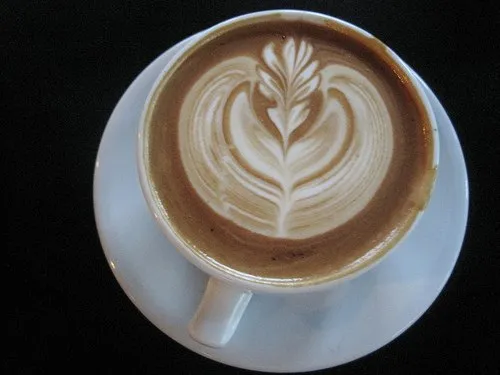by Alex Fisenko
When It’s Right, It Sells
As patrons enter a food court in the student union building of a large midwestern university, the aroma of fresh, grinding espresso coffee beans entices them to the coffee kiosk, featuring espresso-based drinks and freshly baked muffins. Many of these kiosks serve over a thousand espresso-based drinks a day, generate much-needed morning traffic and create a strong and loyal customer base that returns for their lattes several times a week!
When It’s Bad, It Stinks
Unfortunately, many other existing institutional food operators have found the addition of espresso stations disappointing. Worse yet, these drinks only become palatable when their bitter taste is disguised by adding flavored syrups.
A short time ago I was called by a supermarket chain that implemented a dual bagel/espresso concept. They were unhappy with the slow pace of the espresso sales and wanted me to analyze their operation. After watching the barista prepare me a latte and tasting it, I knew right away what one of the main problems was: the product had no resemblance to what a properly prepared latte should taste like.
To make a fair comparison, it would be like serving a stale, hard, half-baked bagel or muffin to a customer, charging for it $5.00, expecting them to like it, and coming back for more. The espresso beans were excellent, supplied by one of the biggest coffee roasters, and the barista followed the preparation guidelines provided by the supplier. I proceeded to make several lattes, using the same coffee and milk. Everybody, including the customers, agreed that this was the best latte that they ever had! The main comment was: “What did you do, change the coffee?”

Caffe Latte Art
Many so-called baristas working in those establishments are espresso challenged and really don’t know what a good latte should taste like, or how to prepare it properly. The astonishing fact is, that in many cases, neither the barista, nor his/her supervisor or even the owner or the president of the business has ever tasted a well-prepared espresso-based drink, and therefore they have no standard of comparison. And because they do not like what they taste, they are not sold on its potential to build traffic into the store and generate new customers. This also hurts the coffee supplier, as the customer tends to blame the coffee if he or she does not like the taste of the drink.
What is the use of developing and roasting the best coffee in the world and paying a premium price for coffee beans, if the espresso beverage becomes unpalatable during the preparation stage at the retail level?
Learn the difference between properly prepared espresso-based drinks and the mediocre product that is unfortunately served in the majority of establishments like bagel shops, ice cream stores, bakeries, delis, contract-managed food companies, and supermarket food courts. Oh, and don’t let me forget the so-called gourmet coffee stores in most of the malls across the country.
Though customer tastes may be subjective, they will know the difference right away. A supervisor or an owner would hit the ceiling if they found their employees serving hard, stale and under-baked bagels or muffins. But they never raise an eyebrow when the equivalent is done to the espresso-based drinks. Why should they? They don’t know the difference, as they never had the real thing themselves.
Get your baristas to understand the difference between mediocre espresso and the real thing. I’ve operated sixteen stores myself and trained probably 1000 people in the last twenty-five years. I am well aware of proper employee training challenges. But it takes the same length of time to train someone the right way as it does to train the same person the wrong way. In most cases, is that the barista follows the training procedure given to him/her by the supervisor, the coffee distributor, or the equipment salesperson. Therefore, as an owner, you must learn how to be an expert barista yourself. Then, teach your baristas the proper preparation techniques. Also, insist that your espresso delivery person checks on the baristas every time the delivery person is in the store. Once the baristas learn how to make excellent espresso drinks, they will develop a taste for the real thing and won’t serve anything that they would not drink themselves.
And a final word of advice: If you won’t do it right, please don’t add espresso to your food establishment. You will turn off the already espresso-educated customers, fail to gain increased traffic, waste your counter space and investment, and upset your employees. Most of all, you will miss the opportunity of creating a true impact on your concept by developing an effective espresso profit center that would attract new customers and increase your revenues.